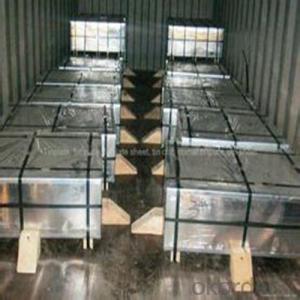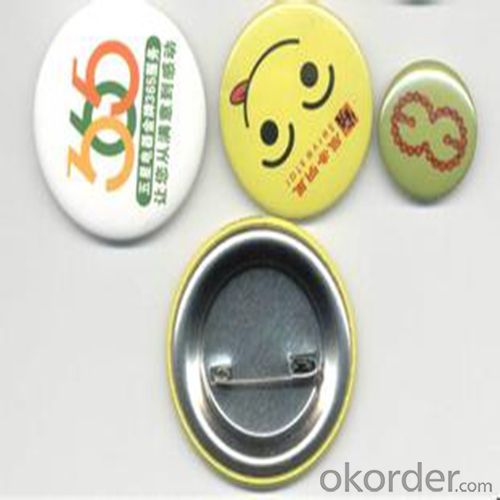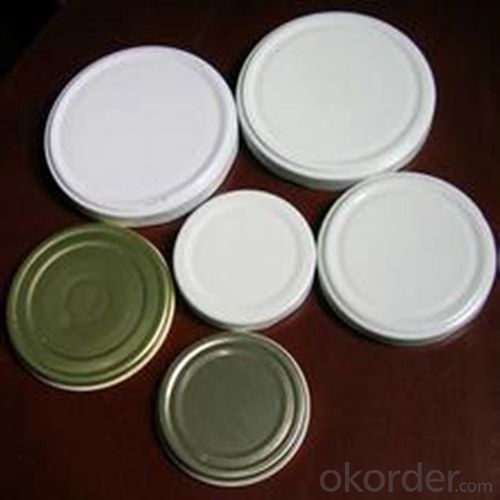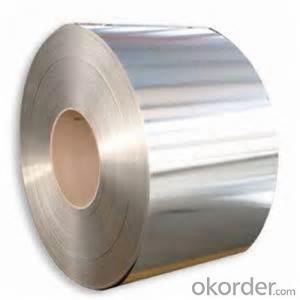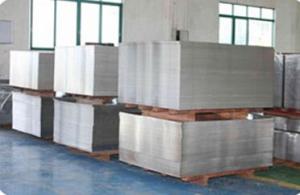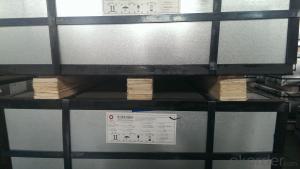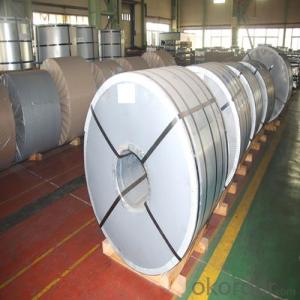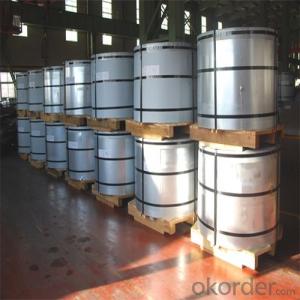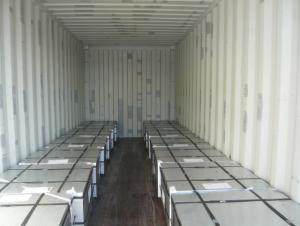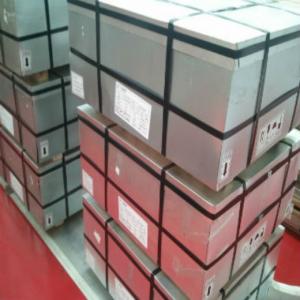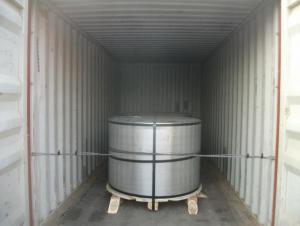Prime Good Quality Tinplate and TFS for Metal Container
- Loading Port:
- Shanghai
- Payment Terms:
- TT OR LC
- Min Order Qty:
- 50 m.t.
- Supply Capability:
- 25000 m.t./month
OKorder Service Pledge
OKorder Financial Service
You Might Also Like
Specification
1.Structure of Prime Good Quality Tinplate and TFS for Metal Container Description
Electrolytic Tinplate, is one thin steel sheet with a coating of tin applied by electrolytic deposition. Tinplate made by this process is essentially a sandwich in which the central core is strip steel. This core is cleaned in a pickling solution and then fed through tanks containing electrolyte, where tin is deposited on both sides. As the strip passes between high-frequency electric induction coils, it is heated so that the tin coating melts and flows to form a lustrous coat.
2.Main Features of the Prime Good Quality Tinplate and TFS for Metal Container
Chromium coated
Corrosion Resistant
Easier to recycle.
Sulphur Blackening Resistance: TFS has sulphur resistance properties, which can be used for canning protein- rich food such as fish.
Filiform Rust Resistance: Filiform is superficial corrosion of the base metal. TFS has a superior base metal which makes it corrosion resistance.
Coating: The coating in TFS is not amphoteric (having the characteristic of an acid and a base, is a compound that can react as either an acid or a base). This means that detergents and dispersion colors can be packed easily.
Paint Adhesion : TFS possesses better paint adhesion properties, thus making it ideal for DRD cans and adhesive bonded cans.
Weldability: TFS can be welded when metallic coating layers are removed by edge grinding.
TFS should be Lacquered / Coated to prevent rust in humid condition.
Internal Coating / Lacquering can be avoided in the case of TFS used to store motor oil or cooking oil.
3.Prime Good Quality Tinplate and TFS for Metal Container Images
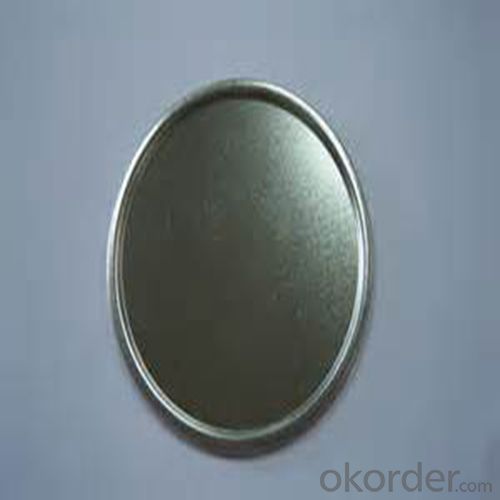
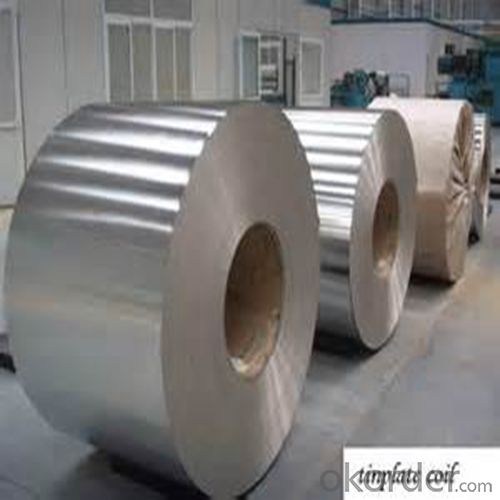
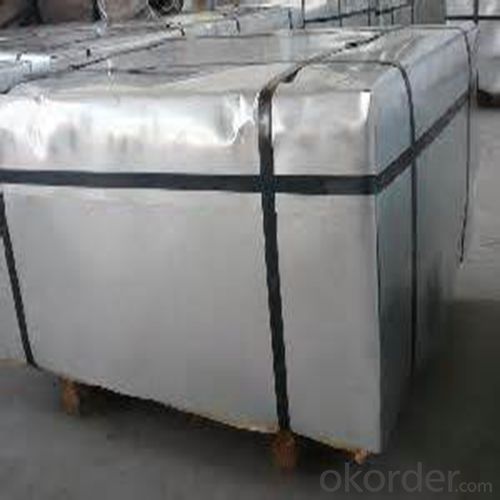
4.Prime Good Quality Tinplate and TFS for Metal Container Specification
Specification of :
Standard: ISO 11949 -1995, GB/T2520-2000,JIS G3303,ASTM A623, BS EN 10202
Material: MR,SPCC
Thickness:0.15mm - 0.50mm
Width: 600mm -1150mm
Temper: T1-T5
Annealing: BA & CA
Coil Inner Diameter: 508mm
Weight: 6-10 tons/coil 1~1.7 tons/sheets bundle
Passivation:311
Oil: DOS
Surface: Finish,bright,stone,matte,silver
5.FAQ of Prime Good Quality Tinplate and TFS for Metal Container
- How are the tinplates specified?
The tinplates are specified as per the steel base, extent of tempering, the coating weight, annealing method and the surface finish.
- How many types there are for base steels?
The base steels are of three types: Type MR, L, D
- Q: What are the common surface finishes for tinplate?
- The common surface finishes for tinplate include bright, stone, silver, and matte finishes.
- Q: What are the common thicknesses of tinplate used for different applications?
- The common thicknesses of tinplate used for different applications range from 0.13mm to 0.49mm.
- Q: What are the common closure systems for tinplate containers?
- The common closure systems for tinplate containers include twist-off caps, screw caps, and press-on lids.
- Q: Can tinplate be used for signage?
- Yes, tinplate can be used for signage. It is a versatile material that can be easily shaped and printed on, making it suitable for various signage purposes.
- Q: How does tinplate contribute to the protection of musical instruments?
- Tinplate, with its durable and corrosion-resistant properties, plays a crucial role in protecting musical instruments. By utilizing tin-coated steel, commonly known as tinplate, musical instrument manufacturers can create sturdy and long-lasting instrument cases. These tinplate cases provide a reliable shield against external factors such as impact, moisture, and temperature fluctuations, ensuring the safety and preservation of the delicate musical instruments inside. Additionally, tinplate's resistance to oxidation and rust prevents the formation of harmful contaminants that could potentially damage the instruments. Therefore, tinplate contributes significantly to safeguarding musical instruments, extending their lifespan, and maintaining their optimal condition.
- Q: How does tinplate contribute to the reduction of carbon emissions?
- Tinplate contributes to the reduction of carbon emissions through its sustainable production process and recyclability. Compared to other packaging materials, tinplate has a low carbon footprint as it requires less energy and releases fewer greenhouse gases during manufacturing. Additionally, tinplate is a highly recyclable material, allowing for the efficient reuse of resources and reducing the need for new production. By promoting the use of tinplate, we can minimize carbon emissions and work towards a more environmentally friendly packaging solution.
- Q: What are the different methods of reusing tinplate packaging?
- There are several methods of reusing tinplate packaging, including repurposing it for storage or organization, using it as a decorative item or plant pot, transforming it into a DIY craft project, or donating it to organizations that can find alternative uses for it. Another option is to recycle tinplate packaging to be used in the production of new materials.
- Q: Tin cans in what way sterilization good ah
- Meat and pepper 1KG or so is tinplate packaging, it is best to use water bath sterilization pot, water bath spinning the best.
- Q: Can tinplate be embossed or engraved?
- Yes, tinplate can be embossed or engraved.
- Q: What are the main quality standards for tinplate?
- The main quality standards for tinplate include factors such as tin coating thickness, surface finish, dimensional accuracy, adhesion strength, resistance to corrosion, and overall product appearance. These standards ensure that tinplate meets the necessary requirements for various applications such as food packaging, electrical components, and decorative purposes.
Send your message to us
Prime Good Quality Tinplate and TFS for Metal Container
- Loading Port:
- Shanghai
- Payment Terms:
- TT OR LC
- Min Order Qty:
- 50 m.t.
- Supply Capability:
- 25000 m.t./month
OKorder Service Pledge
OKorder Financial Service
Similar products
Hot products
Hot Searches
Related keywords
